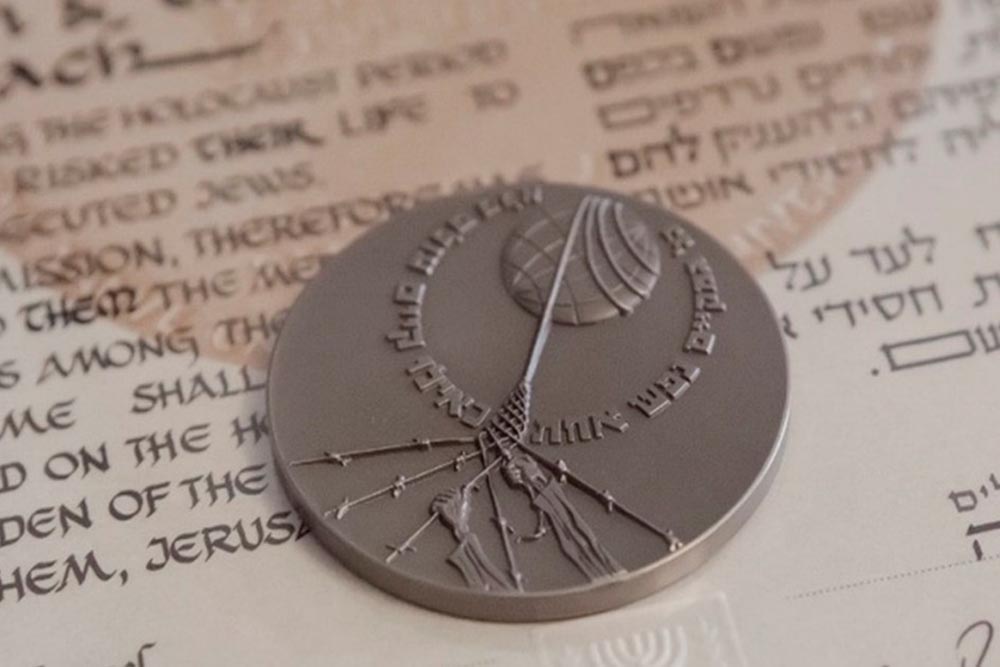Bank of Portraits / Harbuz Herasym, Hanna and Ivan

Harbuz Herasym, Hanna and Ivan
Herasym and Hanna Harbuz lived with their three children in the village of Olhopil in Vinnytsia region. The couple worked in a local collective farm. During the German-Soviet war, the village was ruled by Romanians. The occupation authorities created a separate quarter, where they resettled about 150 local Jewish families and several hundred Jews from Bessarabia. In the building of the synagogue, their fellow tribesmen, expelled from the city of Balta, were housed. Many Jews died in November-December 1941 from the typhus epidemic.
Hanna Harbuz met Mariia Rakhshtein once while working on a collective farm. She said that living conditions in the ghetto are very difficult, so her young daughters and mother are sick all the time. Hanna offered the help, and in a few days, Mariia Yakivna appeared on the doorstep of the Harbuzs' house with 10-year-old Musia, 7-year-old Klara and mother Hitl Milman. They were thin and cold, their skin was scratched by lice. The Harbuz couple decided to give them shelter. In addition, although Herasim and Hanna themselves had minor children, they were not afraid to violate the order of the occupiers, which prohibited the hiding of communists, Jews or partisans on pain of death. A reward of a cow and a large sum of money was promised to those who would inform the authorities about the fact of violation of this order. The Harbus family had to explain to their neighbors and acquaintances that distant relatives live there, whose house burned down.
The occupiers periodically raided peasant yards. The children of the Harbuz family learned to answer them: "We have no Jewish people!”. In the meantime, the Jewish family hid sometimes in a hole, sometimes under a path of straw in the garden. Everyone ate the harvest from the homestead, but it was not always enough for nine people. Therefore, we had to deal with the exchange. Mariia, in worn peasant clothes, smeared her face with soot, like a beggar, walked around the villages with the eldest son of the Harbuz family, exchanging moonshine and some small things for food. When there were many people around, and there could be local police officers among them, Ivan called Mariia mother, and she called him his son.
At the beginning of March 1944, the front was approaching the village. During the retreat, the occupying troops ransacked the houses. Once a group of soldiers attacked the Harbuz family:
“Fortunately, at that moment the Jews managed to hide. The parents and we, three children, were transferred to some room where there were already more than 30 prisoners. It was dark and scary there, children were crying. There was a rumor that we were going to be shot. At dawn, we were driven in the direction of the neighboring village Stratiivka Suddenly, planes with red stars on their wings appeared above us, and the escorts were no longer with us. Taking advantage of this, everyone ran away. My parents and I hid with strangers for two weeks. After liberation from the Germans, we returned to our home, where the Rakhstein family was waiting for us...”. From the memoirs of Ivan Harbuz.
After the war, the families of the rescuers and the rescued maintained friendship – even at a distance (the Rakhstein family later emigrated to the USA). In 1995, sisters Musia Kuleshova and Klara Vovk came to Ukraine and met with the Harbuz family. Together they visited the museum of the history of the village, where materials from the Olhopil ghetto are presented.
In 1998, Yad Vashem recognized Herasym and Hanna Harbuz and their son Ivan as Righteous Among the Nations.
Svitlana Demchenko
Kyiv
National museum of the History of Ukraine in the Second World War
-
fingerprintArtefacts
-
theatersVideo
-
subjectLibrary
